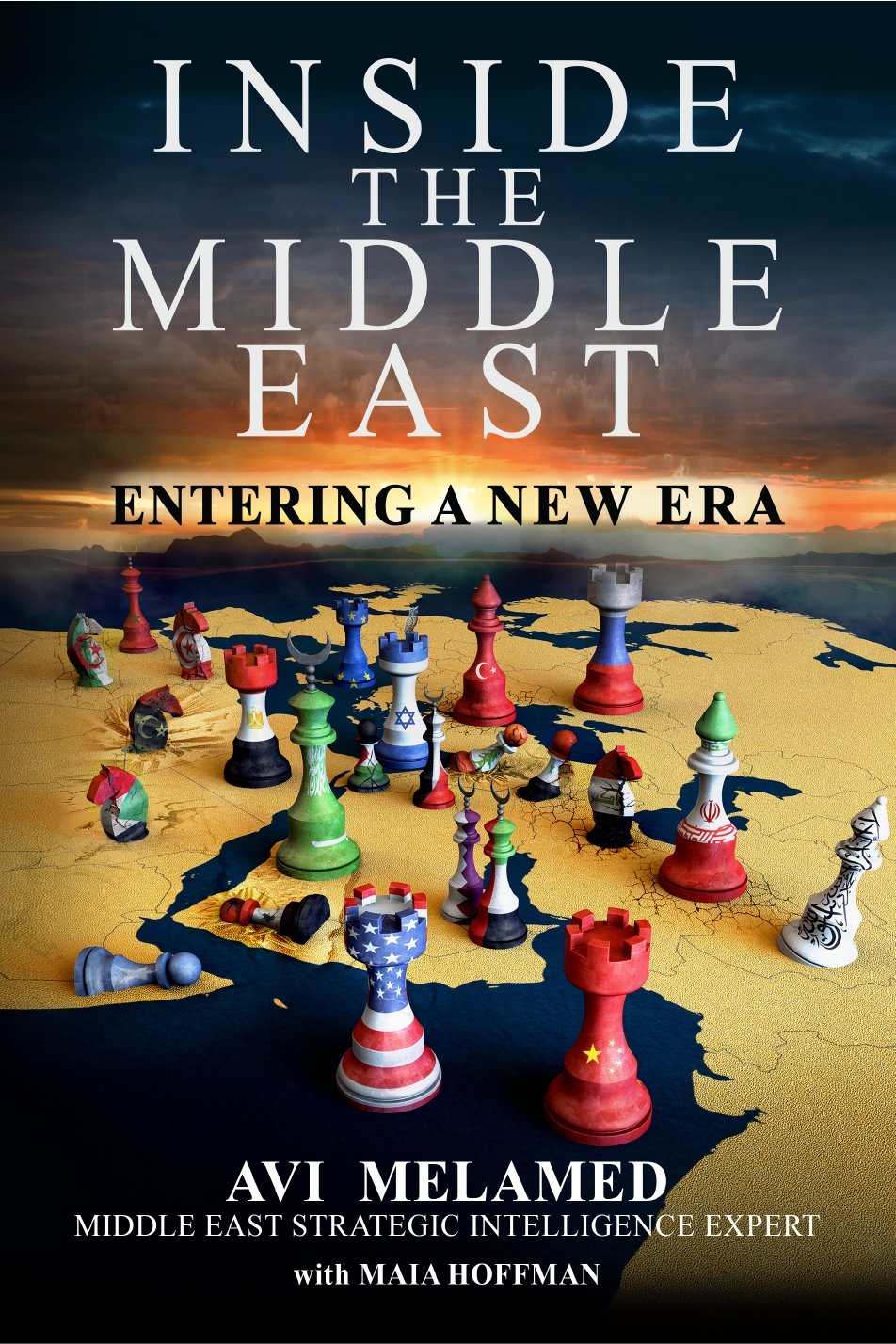|
Getting your Trinity Audio player ready...
|
Session Agenda
Introduction To The Middle East
Pre-Islam Middle East Geostrategic Landscape
Culture & Religion – Components of Identity
Middle East Ethnic Distribution
The Rise of Islam & Islam’s Inner Sunni-Shi’ite Political Power Struggle
Arab Civilization: The Cradle of Islam
The Rashidun Caliphate: The Four Righteous Caliphs
Roots of the Sunni VS. Shi’ite Rivalry
Islamic Empire Under The Rule of the Arab Dynasties
The Umayyad Caliphate
The Abbasid Caliphate
Ancient Arab | Persian | Turkish Power Struggle
The Turkish Ottoman Empire
Overview
In this session, we will learn about the significant cultural, religious, and political factors that have shaped the region. We will understand the geostrategic importance of the Fertile Crescent and Arabian Peninsula, the rise and expansion of Islam, and the roots of the Sunni-Shia divide. Additionally, we will gain insights into the governance of the Islamic Empire under the Umayyad and Abbasid dynasties, the enduring rivalries between Arab, Persian, and Turkish civilizations, and the rise and decline of the Ottoman Empire. This knowledge will provide us with a comprehensive understanding of the historical context that continues to influence the Middle East today.
Background Reading For Session 1
HISTORICAL FRAMING OF THE MIDDLE EAST
- Culture & Religion
- Components Of Identity
- Sunni VS. Shia | Islam’s Inner Political Power Struggle
- Islamic Empire Under the Rule of the Arab Dynasties
- Arab, Persian, Turkish Rivalry
- Turkish Ottoman Empire
- CULTURE & RELIGION
A fundamental factor in shaping the history of the Middle East lies in the fact that the Middle East consists of two geographical areas of enormous geostrategic importance.
One area of enormous geostrategic importance is the area known as the Fertile Crescent, which stretches between the eastern basin of the Mediterranean Sea in the west and Iraq in the east, bordering Turkey to the north and the Arabian Peninsula to the south.
The fertile crescent and the prosperous agricultural civilizations that emerged in the area led to the development of urban centers which became centers for vibrant economic, commercial, and cultural activity. In the fertile crescent, there were constant encounters between different cultures, and between different beliefs. The fertile crescent was the stage that would lead to the emergence of a factor that would play a central role in shaping the history and geopolitical outline of the Middle East and the history of mankind. The monotheistic religions.
The second area of enormous geostrategic importance is the Arabian Peninsula, bordered to the west by the Red Sea, to the south by the Indian Ocean, to the north by the Fertile Crescent, and to the east by Persia (Iran).
The geographical location of the Arabian Peninsula as a bridge connecting Southeast Asia, the Indian Ocean, as well as the Mediterranean Sea, and Europe has given the Arabian Peninsula geostrategic importance. Trading caravans crossed the peninsula from side to side, bringing with them economic prosperity, political stability, and an enriching and fruitful meeting of cultures.
Islam was born in the Arabian Peninsula and appears on the stage of history in the 7th century AD. Inspired by its predecessors – Judaism and Christianity, Islam also centers around the concept of monotheism.
The word Islam means total and full submission to the rule of the one and only god – Allah.
Islam looks at the period that preceded the appearance of Islam in a negative light. Islamic theologians call this period Jahliyah– a term that means ignorance.
However, the reality was different.
In the period before the appearance of Islam, kingdoms and civilizations flourished in the Arabian Peninsula. The key to existence in a hostile desert environment was the ability to maintain a social, political, and economic system based on agreed and clear social, cultural, and legal codes, which were united under a codex known as ‘Urfa – that is, customary law.
From its beginning, Islam is imbued with values and norms that characterized the tribal, social, economic, and political system of the Arabian Peninsula.
In the beginning, Islam was based on Arab ethnicity. The first Muslims were Arabs – meaning the people of the prairie.
As the Muslim empire spread, most Muslims were no longer Arabs but members of other ethnic groups who joined Islam – Persians, Turks, Kurds, and others. This process explains the fact that most Arabs are Muslims, but most Muslims are not Arabs.
In the beginning, Islam was a persecuted religion. Muhammad and his followers had to operate in an environment hostile to the ideas and messages of Islam.
However, unlike Judaism and Christianity, the two monotheistic religions that preceded Islam and had experienced many centuries of persecution and oppression, Islam became a vast empire in just a few decades, spreading from the Arabian Peninsula all the way to modern Spain in the west and northern India in the east.
- SUNNI VS. SHIA | ISLAM’S INNER POLITICAL POWER STRUGGLE
However, the rapid spread of Islam also brought with it various power struggles within the religious and political system of Islam and the Muslim empire.
One of these power struggles that will have a profound effect on the Middle East is the power struggle that developed within Islam around the question of WHO SHOULD LEAD THE MUSLIM NATION AND THE MUSLIM EMPIRE?
The roots of this struggle lie in power struggles that existed even before the appearance of Islam among powerful families and tribes in the Arabian Peninsula.
The founder of Islam, Muhammad bin Abdullah, lived in Mecca, a power center of the Arabian Peninsula. He belonged to the Hashem family of the Al-Quraysh tribe.
Another family in Mecca that was very powerful was the Umayyad family.
When Muhammad died, his successors were called caliphs. The term caliph is part of the Arabic term Khaliphat Rasul Allah—translated as “the replacer of Allah’s Messenger (Prophet Muhammad).”
The first four caliphs in Islam are known as the Four Rightly Guided Caliphs—who were either nominated by their predecessors or elected by a religious advisory council.
The fourth caliph was ‘Ali Bin Abi Talib. He was a cousin and the son-in-law of Muhammad. He ruled from 656 until he was assassinated in 661.
‘Ali had nine wives and a total of twenty-one children.
‘Ali Bin Abi Talib’s first wife was Muhammad’s daughter, Fatimah. Together they had four children—two boys, Hassan and Hussein. And two girls, Zaynab al-Kubra “elder Zaynab” and Zaynab al-Sughra “littler Zaynab,” also known as Umm Kulthum.
‘Ali and Fatimah’s oldest son was Hassan.
After ‘Ali Bin Abi Talib was assassinated in 661, Hassan took his father’s place and became the caliph. After a while, Hassan stepped down.
Following Hassan’s abdication, the Umayyad family took power and ruled the Muslim Empire until 750. The Umayyad capital was in Damascus because its aspiration to lead the Caliphate met serious objections in the Arab Peninsula.
A major opponent of the Umayyads was Hussein Bin ‘Ali Bin Abi Talib, Hassan’s brother, the younger son of ‘Ali bin Abi Talib (the 4th Caliph), and his wife Fatimah (Muhammad’s daughter).
When Hassan abdicated the throne, his brother, Hussein Bin ‘Ali Bin Abi Talib said: “My grandfather was Prophet Muhammad, my father ‘Ali was the caliph, my brother Hassan was the caliph, so I am the next one in line.”
Hussein’s claim of power resulted in a direct collision with the Umayyad dynasty.
In 680, Hussein Bin ‘Ali Bin Abi Talib— Muhammad’s last grandson through direct bloodline—was slaughtered in a battle along with his followers. The battle took place in Karbala, which is modern-day Iraq.
THE SLAUGHTER OF HUSSEIN BIN ‘ALI BIN ABI TALIB AT KARBALA IN 680 IS WHEN ISLAM SPLIT INTO SUNNIS AND SHI’ITES.
The term Sunnat al-Nabi means “the Prophet’s (Muhammad’s) Path.” Hence the term SUNNI.
Sh’iat ‘Ali means “the political faction of ‘Ali Bin Abi Talib”—the fourth Caliph in Islam (and Hussein Bin ‘Ali Bin Abi Talib’s father). Hence the name SHI’ITE.
The overwhelming majority of Muslims—80 percent—are Sunnis. Less than 20 percent are Shi’ites.
The schism between the two is a difference of opinion regarding who is entitled to lead the Muslim empire.
Sunnis believe the ruler of the Muslim world should be the most suitable person for the position.
Shi’ites believe the leader of the Muslim world should be a male descendant of the fourth Caliph, ‘Ali Bin Abi Talib. Therefore, the Shi’ites argue that when Hussein Bin ‘Ali Bin Abi Talib was killed, the crown of leadership was stolen from them.
The rivalry between the merit camp (the Sunnis) and the bloodline camp (the Shi’ites) has led to an unbridgeable gap of irreconcilable hatred and animosity since 680.
For more than 1400 years – and until today – the religious and political divide within Islam between Sunnis and Shi’ites plays a central role, in the shaping of the Middle East story.
Anyone who wants to understand the Middle East today must remember that IN THE MIDDLE EAST, HISTORY IS ALWAYS PRESENT.
- THE ISLAMIC EMPIRE UNDER THE RULE OF THE ARAB DYNASTIES
For the first 600 years of its existence (651 – 1250) the vast Muslim empire stretching from Central Asia to Europe was ruled by dynasties of ARAB origin. The Umayyad (Arab) Dynasty ruled from 661 – 750. Its capital was Damascus. The Abbassid (Arab) Dynasty ruled from 750 – 1250. Its capital was Baghdad.
The secret of the power of the mighty civilization of Islam was the fact that as it was rapidly spreading, Islam absorbed ideas and practices in the fields of government, science, culture, art, and economy that originated in non-Islamic cultures that were ruled by the Muslim empire. This fact, combined with an orderly and stable government system, led to the prosperity of the Muslim civilization.
Islam as a governing system was generally tolerant towards the other cultures, populations, and religions that lived within the boundaries of the Muslim empire. Islam recognizes Judaism and Christianity as monotheistic religions and referred to Jews and Christians as ‘The People of the Book’ (the Bible). However, Islam was also discriminative towards non-Muslims. Jews and Christians were viewed as inferior and discriminated against by law.
- ARAB, PERSIAN, TURKISH RIVALRY
Another axis that has shaped the region for centuries and will impact the Middle East—and the world—for the foreseeable future is the rivalry between a new era 3 large regional civilizations: The Arab civilization, the Persian civilization, and, since the late Middle Ages, the Turkish civilization.
Short review: The Arab civilization gave birth to Islam. Arabs come from the Arabian Peninsula. The first Muslims were culturally and ethnically Arabs. Most Arabs are Sunnis. However, most Muslims are not Arabs.
The PERSIANS are not Arabs. They do not come from the Arabian Peninsula. Persians come from Persia. They do not speak Arabic; they speak Farsi. Islam is monotheistic. The Persians were pagans.
As Islam rapidly spread, by the middle of the 7th Century, it conquered the Persian Sasanian empire. However, the rule of the people of Persia remained in the hands of domestic dynasties and dynasties of Turkman origin.
The Islamic Persian Shi’ite Safavid Dynasty that ruled Persia from 1501 – 1722 is credited with the political and cultural revival of the country. The Safavid dynasty is also seen as the one that politically unified Iran’s different territories to assemble what is known as Iranshahr – ‘The Land of the Iranian People’. In the early days of the Safavid Dynasty, the Safavid state allowed multiple religions.
But under the reign of Abbas I of Persia (1587–1629) also known as the Great Abbas, who hated the Sunnis, he forced the Muslims in Persia – who were Sunni – to convert to Shi’ism. And in particular, Twelver Shiism. Since then, the Twelver Shi’ah stream of Shi’ism has been the state religion.
- TURKISH OTTOMAN EMPIRE
The beginning of the OTTOMAN EMPIRE was waves of tribes migrating from Central Asia that were moving westward.
One of the tribes settled in an area called Asia Minor in the north of present-day Turkey. This tribe, called Osman – after its leader, would grow into one of the largest empires in history. The Ottoman Empire. Like other nations and ethnic groups in the Central Asian region, the Turks adopted Islam as their religion.
The appearance of the Ottoman Empire on the stage of history occurs towards the end of the 13th century. This is a few decades after the collapse in 1250 of the Abbasid Dynasty whose capital was Baghdad, Iraq.
After about 600 years (651 – 1250) in which the Muslim empire was ruled by dynasties of Arab origin (Umayyad and Abbasid), control passes into the hands of a dynasty that is not Arab but TURKISH.
For 600 years (from 1299 to 1920) the Ottoman Empire ruled over a vast area stretching from Europe to the Indian Ocean. At the height of its power – towards the end of the 17th century – the army of the Ottoman Empire reaches the gates of Vienna, in the heart of Christian Europe (1683).
The success of the Ottoman Empire lies in a combination of factors – an efficient and organized administration, a command-and-control system, a professional and trained army, governmental stability, maintaining the continuity of the Ottoman dynasty’s control, and others.
For the most part, the Ottoman Empire continued and implemented Islam’s tolerant – though discriminating – approach towards ethnic and religious minorities. The empire even allowed minorities to have an autonomous lifestyle in everything related to their religion and ethnic identity. The empire’s flexibility and tolerance in this area also contributed to its long-term stability.
However, the decline of the empire was inevitable, even if slow.
The control of such a vast territory presented an increasing challenge to the machinery of government and bureaucracy. As a result, there were many phenomena of corruption and the lack of governance that harmed the taxation and legislation system and weakened the central government.
At the same time, while the Ottoman government was losing power, European powers – the rivals of the Ottoman Empire – were gaining more and more economic, military, and political strength. The technological and scientific progress of the West bypassed the Ottoman Empire. Renowned Orientalist, Bernard Lewis wrote that clocks appeared in the Ottoman Empire about two centuries after they appeared in the West.
In the late 1800’s the process of the Ottoman Empire’s decline accelerated.
Inspired by the emergence of nationalism, ethnic and religious minorities ruled by the Ottoman Empire, began to challenge Ottoman sovereignty.
In the Arabian Peninsula, Egypt, Mount Lebanon, and the Balkans autonomous political frameworks were de facto developing, which in theory still operated under the flag of the Ottoman Empire, but in fact, maintained political autonomy or become a protectorate of foreign powers.
The attempts at revision within the Ottoman Empire were too late and were doomed to failure.
During this period – from the mid-1800s to its demise – the Ottoman Empire is described by its rivals as “the sick man of Europe“ – and it was quite clear that the empire’s time was limited.
The Ottoman Empire’s alliance with Germany as part of the Axis powers coalition in World War I (1914 – 1919) was the last scene in the story of the Ottoman Empire. At the end of the war, there was a new regional and world order.
The Ottoman Empire dissolved in 1924.
It was with the dissolution of the Ottoman Empire, that the people of the Middle East are introduced to the concept of NATIONAL STATEHOOD.
Lexicon for Session 1
Abbasid Caliphate (750 – 1250)
The third Caliphate that was established after Muhammad’s death. The dynasty is named after Abbas Bin Abdul al-Muttalib, Muhammad’s uncle. The Caliphate’s capital was Baghdad.
Allah
The God
‘Ali Bin Abi Talib (600–661)
The fourth Caliph in Islam. Cousin and son-in-law of Prophet Muhammad, the founder of Islam. Ali was married to 9 women and had 21 children. His first wife was Fatimah, the daughter of Muhammad. Together, they had four children—two daughters—Zaineb and Um Kulthum. They also had two sons—Hassan and Hussein. ‘Ali bin Abi Talib was murdered. Hassan briefly took his father’s place and ruled the Caliphate. He stepped down. And then his brother, Hussein (Al Hussein bin ‘Ali bin Abi Talib), took the throne.
Arab
People of the Prairie
Arab Civilization
The Arab civilization gave birth to Islam. Arabs come from the Arabian Peninsula. The first Muslims were culturally and ethnically Arabs. Most Arabs are Sunnis. However, most Muslims are not Arabs.
Ashura
Ashurah means ten in Arabic. Ashura is the 10th day of the month of Muharram, the first month in the Islamic (lunar) calendar. For Shi’ite Muslims, it marks the day that Hussein Bin Ali Bin Abi Talib, the grandson of the prophet Muhammad was murdered in the battle of Karbala in 680. This is one of the cornerstones of the Shi’ite narrative and an intense day of mourning and exhibiting martyrdom through self-flagellation. Every year, Shi’ites commemorate the event known as the Day of Ashurah by performing grief and mourning rituals. The Sunnis also celebrate Ashura. For them, it marks the day that Moses and the Israelites were saved from Pharaoh by God, creating a path in the Sea of Reeds. Sunnis fast and ask for repentance. And every year, Shi’ites commemorate the event known as the Day of Ashurah by performing grief and mourning rituals.
Caliph
Caliph is part of the Arabic term “Caliphat Rasul Allah” – “the replacer of Allah’s Messenger (Prophet Muhammad).”
Caliphate
The economic, social, administrative, and political governing framework of the Muslim Empire. In the Islamic view, there is no separation between the Islamic religion and the governing / political entity. The Caliphate is a global Islamic cultural, political, and religious entity run by shariah law in which no other independent or sovereign state exists.
Four Rightly Guided Caliphs
Al-Khulafa ar- Rashidun or Rashidun. The first four Caliphs in Islam are known as the Four Rightly Guided Caliphs – who were either nominated by their predecessor or elected by a religious council.
Hasan Bin ‘Ali Bin Abi Talib (625 – 670)
The older son of the fourth Caliph Ali Bin Abi Talib and Fatimah, and grandson of the prophet Muhammad. Following the murder of his father in 661, Ali’s disciples announced Hasan was to be the Caliph. However, his opponent Mu’awiyah Bin Abi Sufyan, the founder of the Umayyad Caliphate (650 – 750) challenged Hasan’s rule. Following an armed collision between the armies of the two leaders, an agreement was signed according to which Hasan renounced his claim to rule in return for money and immunity for himself and his follower. Hasan’s short rule as Caliph lasted seven months.
Hussein bin ‘Ali bin Abi Talib (600 – 661)
The youngest son of Ali Ben Abi Talib (the fourth Caliph) and Fatimah, the Prophet Muhammad’s daughter. Hussein was Muhammad’s last grandson through direct bloodline. Caliph Yazid of Ma’awiya in Karbala killed Hussein along with his supporters in Karbala (Iraq of our times) in 680. They were killed on the 10th day of the month of Muharram, the first month on the Islamic (lunar) calendar. Ashurah means ten in Arabic. And every year, Shi’ites commemorate the event known as the Day of Ashurah by performing grief and mourning rituals. The Shi’ite narrative says that “Every day is Ashurah and every place is Karbala.” The killing of Hussein is the cornerstone of the Shi’ite story.
Imam
An Islamic leadership position. It is most commonly used by the Sunnis as the title of a prayer leader of a mosque and spiritual leader of the Muslim community. In Shi’a orthodoxy, Imamis the title of the spiritual and political successors of theProphet Muhammad.
Imamiyyah
The largest branch of Shia Islam is the Twelver branch —in Arabic Imamiyyah. Twelver refers to its followers’ belief in twelve divinely ordained spiritual and political successors (Imams) to the Prophet Muhammad. They are known as the Twelve Imams.
Imam al Mahdi
The Twelver Shi’ites believe there were twelve divinely ordained successors to Prophet Muhammad. They believe that the last Imam was Muhammad Bin Hasan al-Askari, born in 870 and that he disappeared as a small child. The Shi’ites believe he is waiting outside of time and history to the time he will reappear to redeem humanity. He is the messianic figure in Shi’a Islam. And is also known as the “Disappearing Imam.”
Iranshar
The land of the Iranian people
Islam
A dedication to the complete and absolute acceptance of the idea of one God—Allah.
Jahiliya
“Ignorance” – the term Muslims use to describe the era prior to the emergence of Islam.
Jihad
“Supreme Effort.” In its very early days, Islam was on the run. The first believers were required to uphold their faith in Islam and the Prophet of Islam in a hostile environment. To do so, they had to make a supreme spiritual and material effort to uphold their faith in Islam and Muhammad. With the spread of Islam – mainly through the power of the sword -the idea of the willingness to sacrifice one’s life in the name of Islam permeated into the concept of jihad.
Karbala
A city in central Iraq and one of the holiest places for Shia. The burial site of Hussein Bin ‘Ali Bin Abi Talib, the third Shi’ite Imam and the last male grandson through a direct bloodline, is in Karbala.
Mahdi
“The rightly guided one.” A Messianic figure who, according to Islamic belief, will appear at the end of times to rid the world of evil and injustice.
Al-Medina
City in Saudi Arabia, burial place of Prophet Muhammad.
Mecca
City in Saudi Arabia. Birthplace of prophet Muhammad. One of the three sacred places for Islam. Al-Medinah, where Muhammad died is second. And the al-Aqsa mosque in Jerusalem is the third holiest site for Islam.
Najaf
A city in central Iraq. It is the Shi’ite world’s spiritual capital and the center of Shi’ite political power in Iraq. It is considered the third holiest city of Shia Islam (after Mecca and Medina). The fourth Caliph, Ali Bin Abi Talib, is buried in Najaf.
The Persian Civilization
The Persians are not Arabs. They do not come from the Arabian Peninsula. They come from Persia. They do not speak Arabic; they speak Farsi. Persians were pagans. As Islam rapidly spread, the Persian civilization adopted Sunni Islam. But in the Middle Ages, the Persian ruling dynasty adopted the Shi’ite orthodoxy, which has been the primary religion of Persia ever since.
The Prophet Muhammad (570–632)
He founded Islam in the early seventh century.
Qur’an
The Sacred Book of the Muslims. The word means “what is read.” The Muslims believe that the Qur’an is the word of Allah placed in the mouth of Muhammad.
Quraysh
Group of Arab tribes that were from and controlled the city of Mecca. Prophet Muhammad was born into the Hashim clan of the Quraysh tribe.
Sharīʿah
Literally translated “a path.” The sharīʿah is a codex of laws developed based on a combination of the ‘Urfa (the Code of Laws of Tribes), the interpretation of the Qur’an (the Holy book of Islam), the Hadith (the oral book of Islam), and the interpretation of Islamic theologians. The Sunnis believe the Sharīʿah codex was completed and sealed in the eleventh century. The Shi’ites believe the Sharīʿah is dynamic and open to interpretation.
Shi’a / Shi’ite / Shi’at ‘Ali
“The (Political) Faction of ‘Ali.” Shi’ites constitute approximately 15% of all Muslims in the world. Shi’ites believe that the leadership of Islam is a matter of inheritance. Sunnis believe it should be the most appropriate leader based on his skills. Shi’a was founded in the seventh century A.D. after the assassination of Hussein Bin ‘Ali Bin Abi Talib (‘Ali was the fourth Caliph of Islam) in the battle of Karbala (now a city in southern Iraq) in 680. Shi’ites claim that the leader of Islam should be a male descendant of ‘Ali bin Abi Talib.
Sunnah / Sunni
“Sunnat al-Nabi” (The Prophet’s (Muhammad) Path / Way). About 85% of Muslims are Sunni. Sunnis believe that the leadership of the Islamic world is not a matter of inheritance, but a choice of the most appropriate leader based on his skills. He does not rule alone. He rules side by side with and is advised by an advisory council called the “Shura” – whose role is to assist him in fulfilling his duties as a leader and in accordance with Islamic law.
The Turkish Ottoman Empire
The fourth Muslim Caliphate after Muhammad’s death. Its origin is Turkman tribes from central Asia. The empire ruled the Middle East for more than six hundred years, from about 1299 to 1920.
Twelver Shi’ite
The largest Shi’ite stream. Also called the “Imamiyyah.” The Twelvers believe in a line of spiritual leaders called “Imam,” starting with Ali bin Abi Taleb. The last in the line – number 12) – was Muhammad bin Hassan al-Assakri, also known as the “Anticipated (or Disappeared) Imam.” According to the Shi’ite belief, he disappeared as a small child in 940. But he is not dead. He is waiting ‘outside of history and time’ until circumstances allow him to reappear as a Messiah – “Mahdi.” When he returns, he will lead the salvation of humanity through Armageddon. A process in which most people will be killed, and those who survive will receive the kingdom of eternal peace.
Ummah
The Islamic collective community.
The Umayyad Caliphate (661–750)
The second of the four major caliphates that were established after the death of Muhammad. The Umayyad caliphate capital was Damascus.
‘Urfa
Customary law.
Yazid bin Mua’awiya (645–683)
The seventh Caliph in Islam and the second Caliph of the Umayyad dynasty. Yazid’s army slaughtered al-Hussein bin Ali bin Abi Talib and his family and supporters in 680.
Zaynab al-Kubra (“elder Zaynab”) and Zaynab al-Sughra (“littler Zaynab” also known as Umm Kulthum) The fourth caliph was ‘Ali Bin Abi Talib, the son-in-law, and cousin of Muhammad who ruled from 656 until he was assassinated in 661. ‘Ali had nine wives and a total of twenty-one children. His first wife was Muhammad’s daughter, Fatimah. Together they had four children—two boys, Hassan and Hussein, and two girls, Zaynab al-Kubra and Zaynab al-Sughra.
Zaydism
One of the Shi’a sects named after Zayid Bin ‘Ali. The Zaidis consider Zayd ibn Ali as the fifth. After the time of Zayd ibn ‘Ali. the Zaidis believed that any descendant of Hasan ibn Ali or Hussein ibn Ali could be an Imam after fulfilling certain conditions. The Zaidi doctrine of Imamah does not presuppose the infallibility of the imam nor that the Imams receive divine guidance. Zaidis also do not believe that the Imamate must pass from father to son but believe it can be held by any descended from either Hasan ibn Ali or Hussein ibn Ali.






